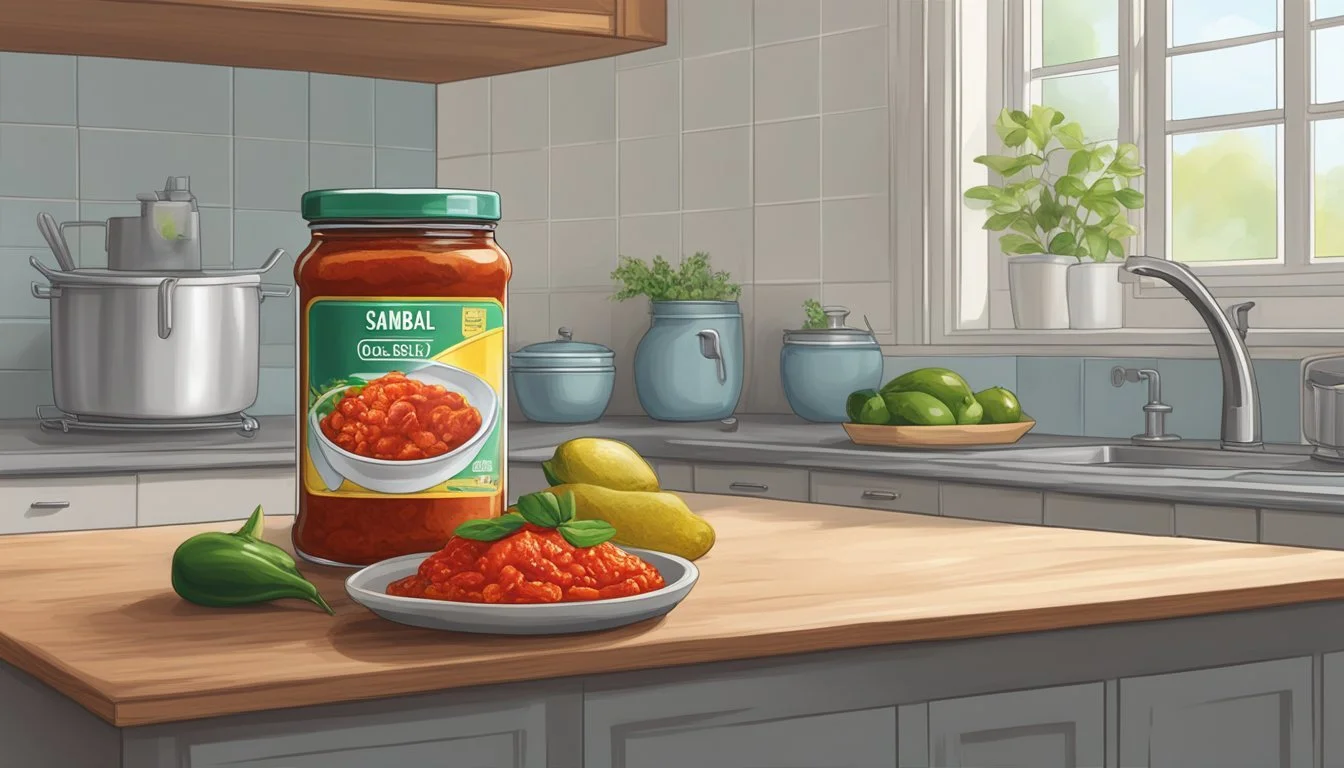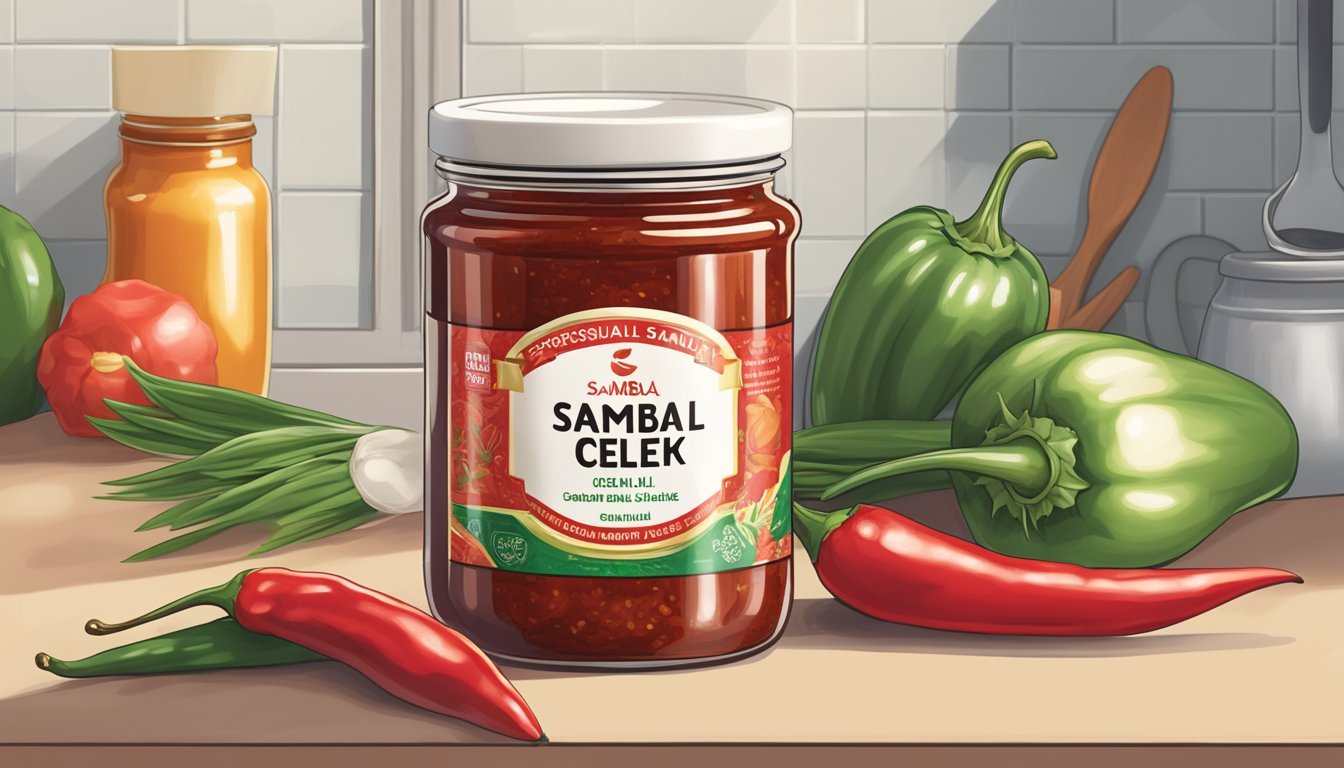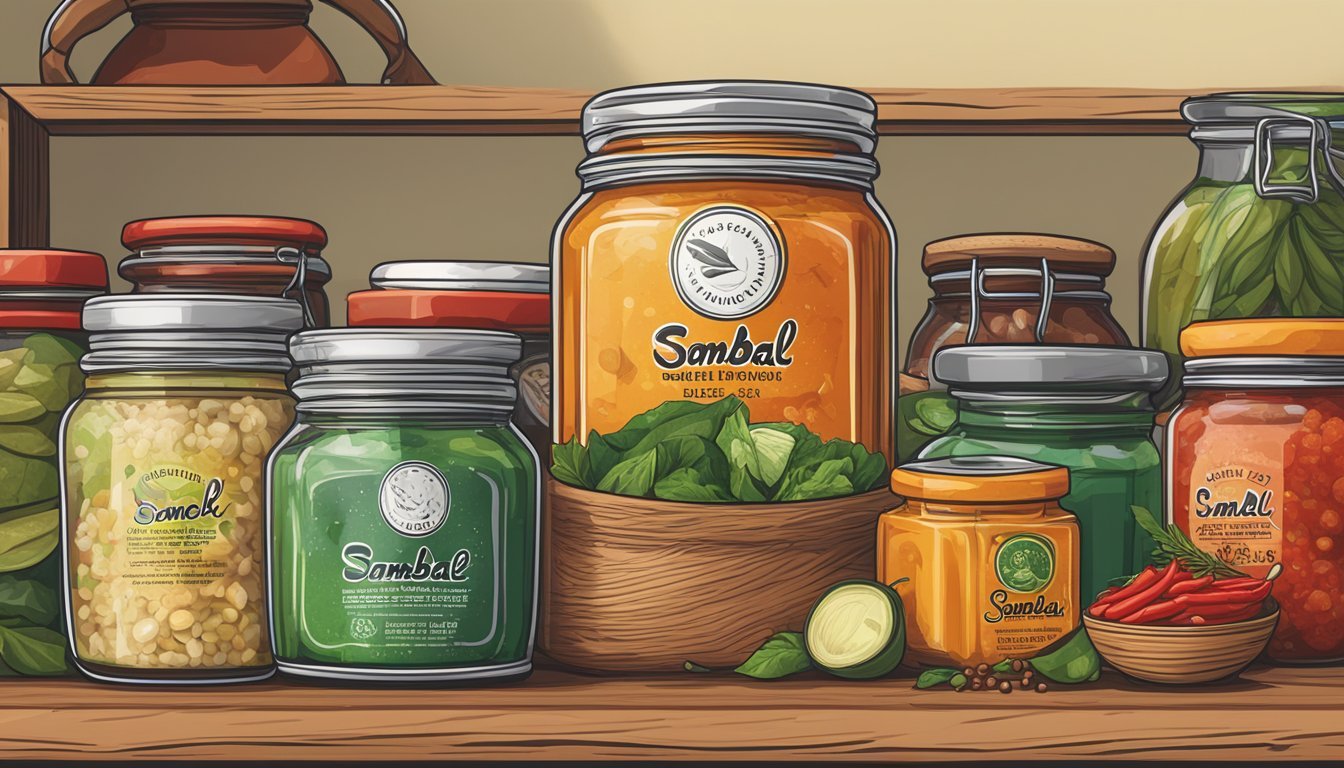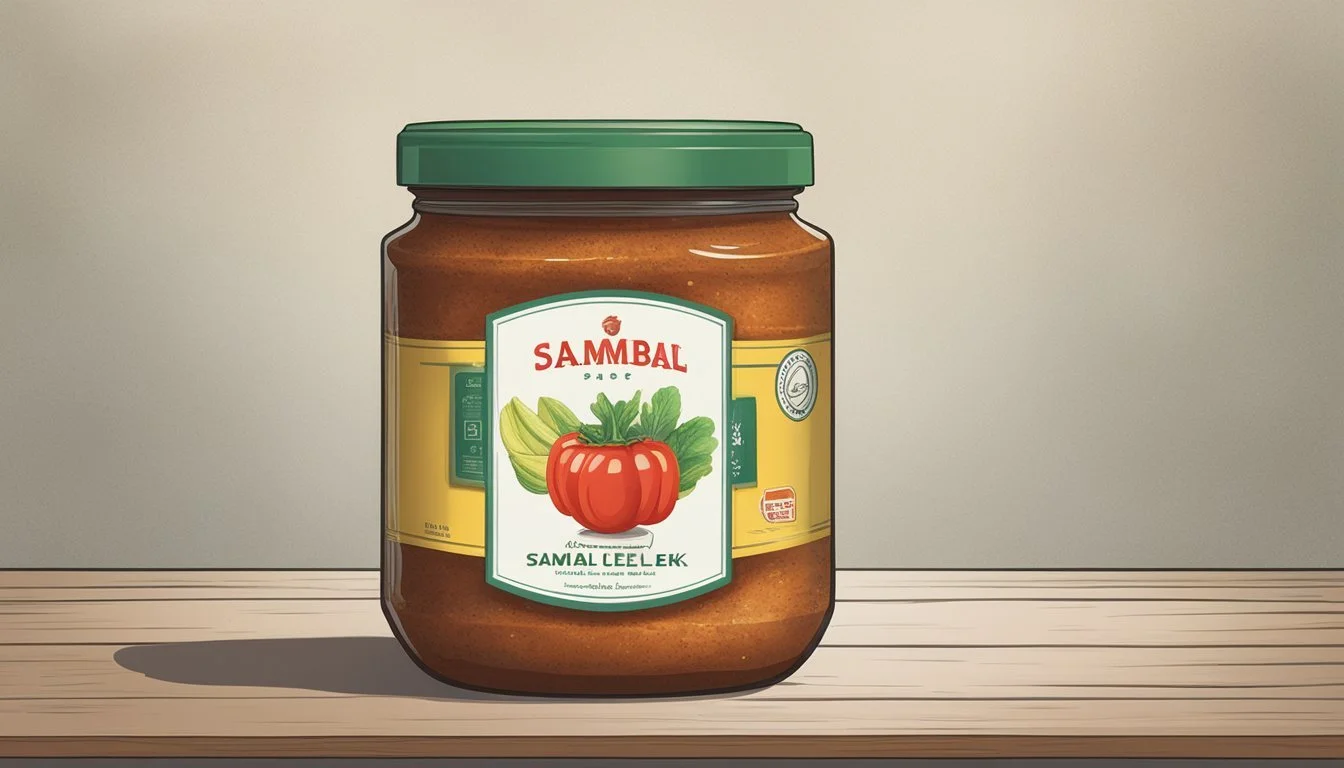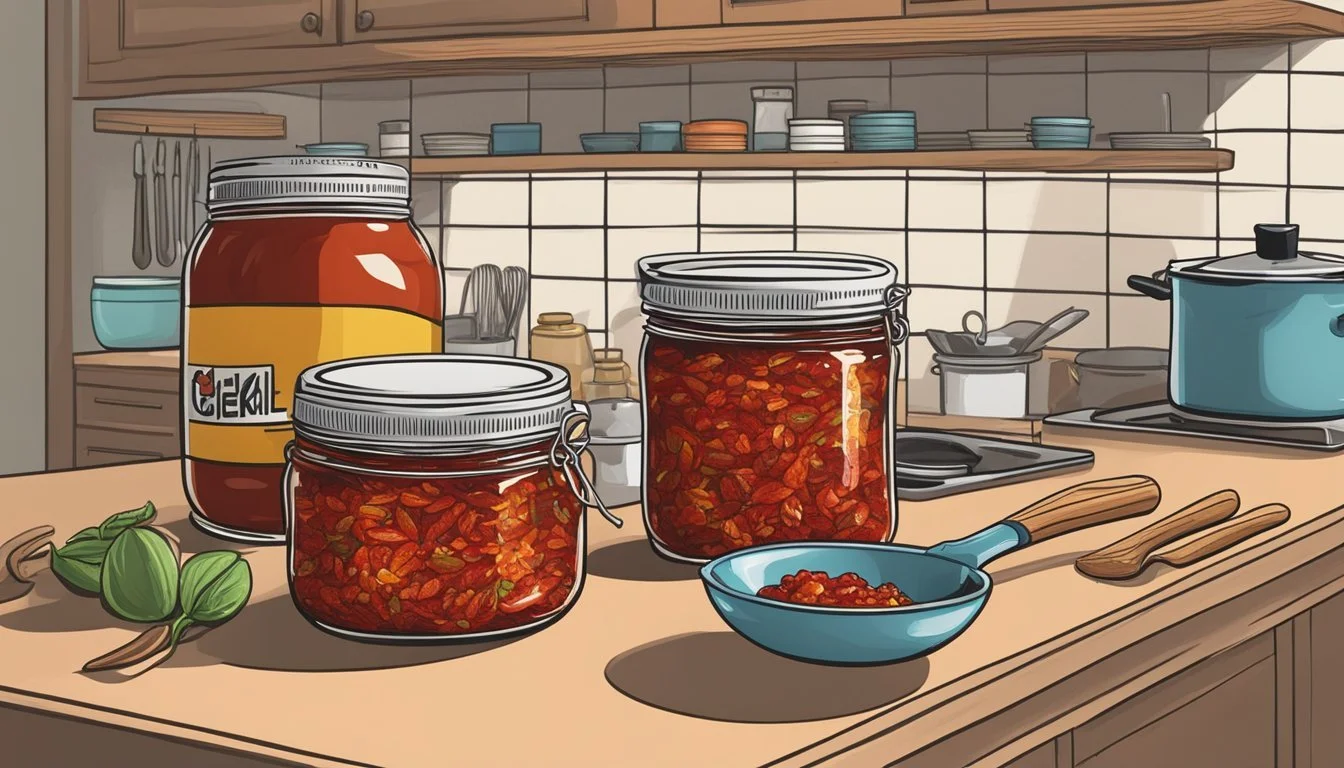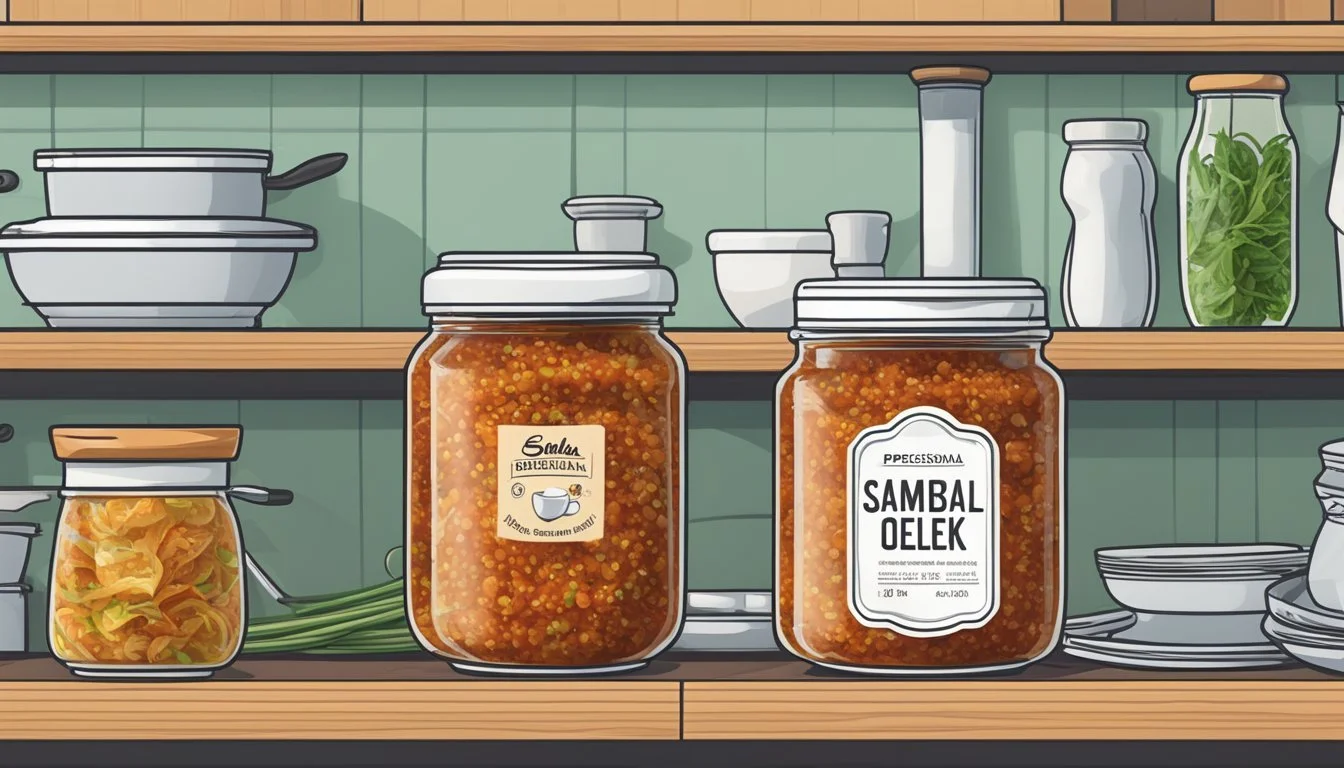Does Sambal Oelek Spoil?
Shelf Life and Storage Tips
Sambal oelek, a popular Southeast Asian chili paste, has found a place in many kitchens around the world due to its vibrant flavor and versatility. As with any condiment, there comes the question of its shelf life and storage. An unopened bottle of sambal oelek can last at room temperature for about a year and potentially up to 18 months if stored properly. Its high acidity and chili content act as natural preservatives, making it a durable addition to any pantry.
Once opened, sambal oelek still enjoys a fairly long shelf life if it is kept in a cool, dry place. Refrigerating the paste can further extend its usability, ensuring that it retains its flavor and prevents mold growth. Always check for visible signs of spoilage, such as mold or a significant change in smell or texture, despite the paste's resilience against spoilage.
Many enjoy sambal oelek as a staple condiment for adding spice to various dishes, from stir-fries to dipping sauces. Its robust shelf life and ease of storage make it both a convenient and reliable ingredient to have on hand.
Understanding Sambal Oelek
Sambal Oelek, a traditional Indonesian chili paste, brings a vibrant and spicy kick to numerous dishes. Known for its simple yet powerful ingredients, it is widely used across Southeast Asia.
Origin and Culture
Sambal Oelek's roots are deeply embedded in the cultural cuisine of Indonesia and Malaysia. The term "sambal" refers to a variety of chili-based sauces, while "oelek" (or "ulek") signifies the traditional mortar and pestle used to grind the ingredients. This staple has become popular not only in its native regions but also globally, influencing the culinary practices of various countries. Traditional sambal is often handmade, preserving its authentic flavor and texture.
Composition and Flavor Profile
The primary components of Sambal Oelek are crushed chili peppers, vinegar, and salt. Occasionally, garlic and other spices are included to enhance the flavor. Thai chilies are commonly used, offering a sharp and intense heat. The chili paste's acidity from the vinegar balances the spiciness, creating a versatile condiment.
Flavor Profile:
Heat: Intense
Acidity: Mild, from vinegar
Additional notes: Some variations might include garlic or sugar, altering the overall taste.
Common Uses in Cuisine
Sambal Oelek is utilized in a variety of dishes, adding heat and depth. It is often incorporated into soups, noodle dishes, and marinades. In Indonesian cuisine, it pairs well with satays and grilled meats. Malaysian recipes might mix it with rice or use it as a condiment for seafood.
Typical Applications:
Noodle dishes: Enhances flavor and spice
Marinades: Adds depth to meats
Side Condiment: Complements grilled or fried foods
Versatile and flavorful, Sambal Oelek's simple ingredients allow it to adapt to numerous culinary uses, making it a valuable addition to any kitchen.
Storage Fundamentals
Proper storage of sambal oelek ensures its longevity and maintains its flavor profile. Key considerations include suitable temperature, container management, and awareness of potential spoilage.
Ideal Storage Conditions
Sambal oelek requires a cool, dry place to maintain its quality. A pantry or cupboard away from direct sunlight works best.
Using an airtight container helps prevent exposure to moisture and contaminants. It's also crucial to keep the container sealed tightly after each use. This limits exposure to air, preserving the chili paste’s potent flavors and preventing any spoilage.
For unopened sambal oelek, storing it in a dark, dry place extends its shelf life up to a year. Always check the manufacturer's expiration date for additional guidance.
Refrigeration vs. Room Temperature
Opened sambal oelek can be refrigerated to extend its lifespan. Storing it in the fridge preserves its freshness for about 6 months to a year.
At room temperature, sambal oelek can last several months, but storing it in the refrigerator has its benefits. The cold environment slows down the growth of mold and bacteria.
It's still safe to store unopened sambal oelek at room temperature in a cool, dark place. Careful storage minimizes the risk of spoilage and retains the paste's flavor.
Impact of Improper Storage
Improper storage can significantly reduce the quality and safety of sambal oelek. Exposure to heat or light can deteriorate the chili paste, causing changes in color and taste.
Moisture is a major concern. Storing sambal oelek in a damp environment or an unsealed container can lead to mold growth. Always keep the jar tightly closed and store it in a dry place.
Ignoring these storage guidelines raises food safety risks and shortens the product’s shelf life. Ensuring proper storage conditions helps retain both the flavor and safety of sambal oelek.
Shelf Life and Spoilage
Sambal oelek, a popular chili paste made from crushed chili peppers and vinegar, has a relatively long shelf life thanks to its natural preservatives. Nonetheless, various factors can affect its longevity and potential spoilage.
Estimated Shelf Life
For unopened bottles of sambal oelek, the typical shelf life ranges from 12 to 18 months when stored in a cool, dry place. The vinegar and chili peppers act as natural preservatives, extending its shelf life. Opened bottles should ideally be refrigerated, where they can last for 6 months to a year. Always check the expiration date, although the paste often remains safe to use beyond this if no signs of spoilage are evident.
Factors Affecting Spoilage
Several factors influence sambal oelek's spoilage:
Storage Conditions: Proper storage in a cool, dry place or refrigeration can significantly extend the paste's shelf life. Exposure to heat and light can deteriorate its quality.
Ingredient Quality: Fresh, high-quality ingredients enhance longevity by reducing bacterial growth.
Packaging: Airtight packaging helps prevent mold growth and contamination from external factors.
Frequency of Use: Frequent opening and exposure to air can introduce bacteria and mold, speeding up spoilage.
Identifying Signs of Spoilage
Identifying spoilage in sambal oelek is crucial to avoid foodborne illnesses.
Mold Growth: Look for visible molds on the surface. Mold is a clear indicator that the product should be discarded.
Off Smells: Spoiled sambal oelek may emit sour, off-smells indicating bacterial activity.
Change in Color: Discoloration or dark spots can be signs of spoilage.
Texture Changes: A noticeable change in texture, such as becoming unusually thick or watery, may indicate spoilage.
Expiration Date: Using sambal oelek beyond its expiration date increases the risk of spoilage, even if signs are not immediately apparent.
By being aware of these factors and signs, users can ensure they are consuming sambal oelek that is safe and at its best quality.
Preservation Techniques
To ensure sambal oelek maintains its freshness and flavor, proper preservation techniques are essential. These techniques include freezing, utilizing preservatives, and understanding the differences between homemade and commercial versions.
Freezing Sambal Oelek
Freezing is a practical option for extending sambal oelek's shelf life. To freeze sambal oelek, transfer it to a freezer-safe container or bag, ensuring no air can enter. Removing as much air as possible prevents freezer burn and maintains the condiment's quality.
Label the container with the date to keep track of its storage time. Frozen sambal can typically maintain its flavor for up to six months. When ready to use, thaw the desired amount in the refrigerator, avoiding room temperature to prevent spoilage.
Reheating can be done gently in a saucepan to restore texture. Freezing divides large batches into manageable portions, ensuring minimal waste.
Using Preservatives and Acidity
Preservatives and natural acidity help extend sambal oelek's shelf life. Vinegar, a key ingredient in sambal, provides natural preservation by creating an acidic environment that inhibits bacterial growth.
Additional preservatives like potassium sorbate may be used in commercial products to further extend shelf life. Sugar and salt are traditional additives that draw out moisture, discouraging microbial growth.
Fresh lime or lemon juice can be added for extra acidity and flavor, bolstering preservation. For homemade versions, maintaining a proper balance of these ingredients is vital. Ingredients like distilled vinegar ensure consistency and longevity.
Homemade vs. Commercial Varieties
Homemade sambal oelek and commercial varieties differ in preservation needs. Commercial products, such as those from Huy Fong, often contain added preservatives to extend shelf life, driving a longer-lasting product.
Homemade versions rely more on natural preservation methods like vinegar and salt. Homemade sambal should be kept in an airtight container in the refrigerator to extend its usability, typically lasting a few weeks.
Commercial versions are often stored in glass or specific plastic containers designed to protect against moisture and contamination. Consumers should still adhere to storage recommendations to maximize freshness.
Culinary Applications and Tips
Sambal oelek is a versatile ingredient that can be used to enhance the flavor and texture of many dishes. It can serve as a substitute for other spicy condiments and blend well with various ingredients to create unique culinary experiences.
Enhancing Flavor and Texture
Sambal oelek adds a hot and spicy kick to a variety of dishes. Its simple composition of red jalapeños or fresno chilies, vinegar, and sometimes salt, contributes to its intense quality. When mixed into stir-fries, soups, or stews, it elevates taste and texture without overpowering other flavors.
It can also be used as a seasoning for meats, seafood, and vegetables, providing a balanced spicy, sour, and slightly sweet profile. Incorporating sambal oelek into sauces or marinades yields a robust flavor that can deepen the complexity of dishes like nasi goreng or Thai-inspired creations.
Substitutions and Variations
For those looking to vary the heat or flavor profile, sambal oelek can be substituted with sriracha or homemade chili paste. Sriracha tends to have a sweeter taste, which may complement certain dishes better.
For a unique twist, combine sambal oelek with ingredients like lemongrass, shallot, or lime, which not only alter the flavor but also enhance the aroma. It fits well in gluten-free diets and can be tailored to different culinary traditions, making it adaptable for various recipes.
Creative Pairings and Serving Ideas
To make the most of sambal oelek, try pairing it with noodles, rice dishes, or even salads for an unexpected splash of heat. It shines as a dipping sauce when mixed with lime juice and kosher salt, creating a tangy and spicy companion for spring rolls or grilled meats.
In culinary experiments, you might blend it into quinoa, couscous, or even a soup base to nuance the spiciness. Its ability to harmonize with both traditional and innovative recipes makes sambal oelek indispensable for those looking to enhance their cooking with bold flavors.
Safety and Health Considerations
When managing sambal oelek, it's vital to consider proper storage techniques and careful monitoring for spoilage signs to ensure safety and maintain its quality.
Preventing Contamination
Clean utensils and surfaces are essential when handling sambal oelek. Using a dirty spoon can introduce bacteria into the jar, leading to contamination.
Refrigeration helps extend the freshness of the opened sambal oelek for up to a year. If the sambal shows any mold growth, off smells, or significant color changes, discard it immediately.
Freezing sambal in an airtight container can preserve it for up to 6 months. Always label the containers with the date for easy tracking.
Understanding Food Safety Labels
Food safety labels provide a guide to the sambal's shelf life. These labels include "best by" or "use by" dates, which are crucial for ensuring optimal quality and safety.
In the United States, food labels on sambal oelek indicate its expiration. It's safe to consume as long as there's no visible spoilage, even past this date.
Always inspect the appearance and smell before use. This practice helps chefs and consumers maintain the health and safety of their dishes. Avoid using any sambal oelek that displays mold, an unusual smell, or an unpleasant taste.
Cost and Availability
Sambal oelek is accessible for purchase through various channels. Additionally, many opt to make it at home, utilizing available ingredients to customize their flavor preferences.
Purchasing Options
Sambal oelek is conveniently found in many local grocery stores, particularly in the international or Asian food sections. It is commonly packaged in plastic jars, which can range in size from small to large containers. Pricing typically varies, with smaller jars often priced around $3 to $5, while larger containers can cost $10 or more.
Asian markets are another reliable source, where a greater variety of brands and sizes may be available. Online retailers offer yet another avenue, with platforms such as Amazon and specialty food websites providing a wide selection. Purchasing online often allows for bulk buying, which can be more cost-effective. Shipping costs may apply, but many retailers offer free shipping on bulk orders.
Making Sambal Oelek at Home
Creating homemade sambal oelek is a popular alternative for those seeking a fresh and customizable condiment. Basic ingredients include red chili peppers, vinegar, and salt. Some recipes also incorporate garlic or sugar to enhance flavor.
Homemade versions can be cost-effective, especially if ingredients are purchased in bulk. The process involves simple steps: crushing or grinding the chili peppers, mixing with vinegar and salt, and storing in sterilized containers. Typically, a small batch of homemade sambal oelek can be made for less than $5, depending on ingredient prices. This option allows control over spiciness and ingredient quality, catering to individual taste preferences.

